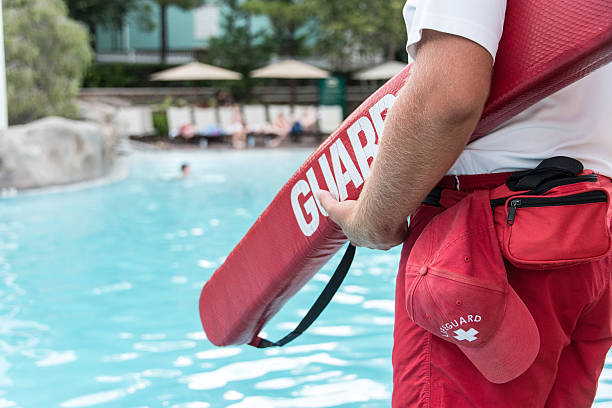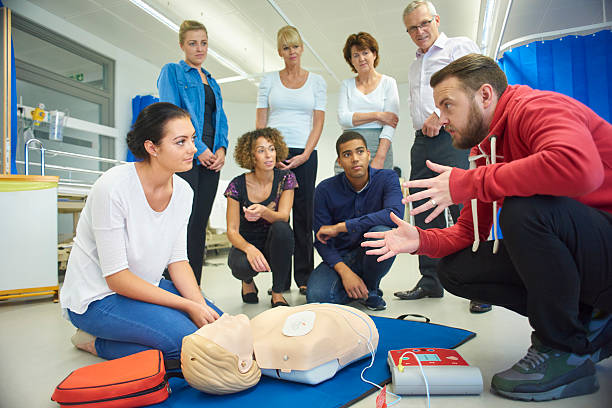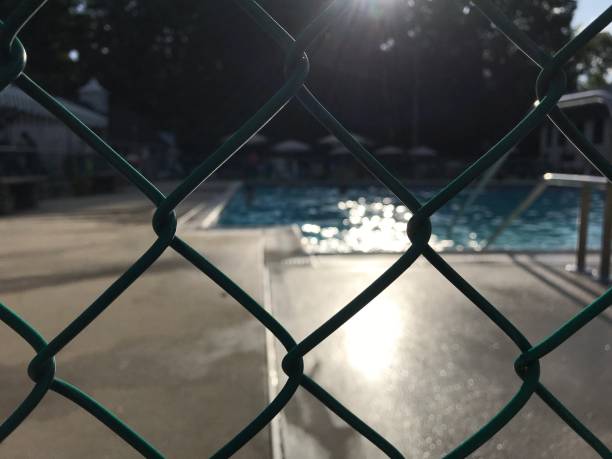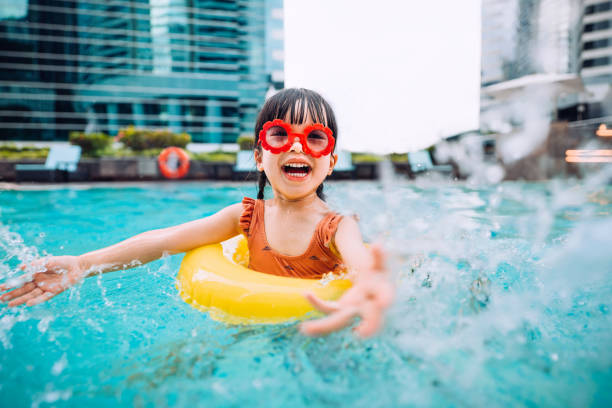11 Ways to Keep Your Children Safe from Drowning in the Pool

If you have a swimming pool at home or like swimming, you know how important it is to take measures to save people from drowning. Those who are caring for newborns or small children will find this to be of paramount importance. Drowning is the biggest cause of death for children less than 14 years old. One in five water-related deaths, according to the Red Cross, occurs in children younger than four. We here at AquaSTAR Canada see this as very vital. That’s why we’re giving you some advice on how to keep your kids safe when they’re swimming.
Preventing accidental drownings is crucial. Discover What You Can Do to Avoid Mishaps.
1. Keep a close eye on your kid while they're in the pool.
No one can replace a parent or guardian’s watchful eye when their kid is in the water, so keep a tight eye on them. At least one adult has to keep a close eye on the kids while they swim. Twenty adults who are not paying attention to the situation are not enough.
According to the Lifesaving Society of Ontario, 92 percent of children under the age of 5 who drowned did so while being unattended or when an adult was preoccupied. They also found that 63% of the time, the youngster was alone when the death occurred. As a result, it’s even more crucial to keep an eye on your kids while they’re near water.
2. Recognize the Warning Signs of Drowning
Most persons who drown are unable to make any kind of noise above the water, thus this potentially deadly situation may happen at any moment. Although the drowning victim often screams and flails about in movies, this seldom happens in real life. To save a life, you need to be able to recognize the signs of drowning and know what to do if you see them. When water is ingested, it may cause the vocal chords to spasm and shut, leading to dry drowning.
Among the symptoms of drowning include, but not limited to, the following:
- Low in the water with the mouth near the water’s surface
- glazed and hollow eyes
- Over the forehead or eyes is hair.
- Hyperventilating or gasping
- Unable to effectively roll onto the back
3. Be familiar with lifesaving techniques including cardiopulmonary resuscitation (CPR) and first aid
Though it may seem obvious, even seasoned swimmers often fail to recognize the value of this information. You should always be prepared for an emergency by keeping your CPR and First Aid skills current. A child’s probability of survival may increase by 100% if CPR is administered effectively. This is why in addition to our standard in-home individual swim lessons, AquaSTAR also provides water safety and first aid training.

CPR keeps the heart and brain functioning by keeping blood circulating. This may provide precious time for a paramedic to arrive and provide more advanced treatment to a drowning sufferer. The acquisition of a relevant certification is an excellent first step. However, the greatest approach to make good use of methods is to put them into practice.
4. Make sure the adult in charge can swim.
The responsible adult should know how to swim and have had first aid and CPR training. In the event of a swimming-related emergency, bystanders might provide CPR until medical help arrived.
By learning to swim, adults and older children can make a difference. At this method, they may rescue those who are in danger of drowning before the situation worsens. Knowing how to respond in an emergency when an adult is there might be the difference between life and death.
5. Teach Your Children to Swim
Children aged 1 to 4 who participate in swimming lessons are 88% less likely to drown than children who do not. Children may start swimming lessons at an early age, but they should always be supervised by an adult.
Learning to swim is a life skill that benefits people of all ages. Drowning is preventable if children learn the fundamentals early on. Floating on one’s back, for instance, can help a child remain above water until rescuers arrive.
6. Install a Pool Fence
A properly built fence will prevent youngsters from accidentally entering the pool area. Having a fence around the pool of at least 1.2 meters (four feet) in height is recommended and may be mandated in certain areas. Gates should be equipped with a latch and padlock and placed out of a child’s reach. Chain-link fences are impractical because they can be easily scaled.

Adding that extra barrier can prevent young children from attempting a solo pool entry. Your kids will wait for you to go swimming if the opportunity never arises. Swimming is not only safer, but more enjoyable as a result.
7. Safeguard the Pool by Installing Necessary Devices
Put a phone, a safety ring, a rope, and a first aid kit by your pool just in case. Do not assume that your babysitter or other caregiver is aware of the rules governing the use of your swimming pool. When all necessary supplies are on hand, everyone can rest certain that they can handle any emergency that may arise.
Preparation entails possessing the necessary tools. If someone ever needs saving, you will be prepared. Keep in mind that enjoying yourself in the water does not exclude exercising caution.
8. Drains Are Dangerous, So Be Careful
Because of the suction created by pool and hot tub drains, it is possible for limbs and hair to get entangled and cause drowning. In order to lessen suction, you should install drain covers and maybe more than one drain. Keep kids away from the suction in the hot tub.
No one, particularly children, should ever risk being swept down a pool drain. If you get too close, you could potentially drown that person. Learning about these threats is essential. According to the CDC, the majority of victims of these accidents are youngsters under the age of 14, and that 70% of the victims have significant injuries.
9. Keep Playthings Tidy When Not in Use
Cleaning up after a great game is essential. Put the toys away and drain the water from the pool after you’re done playing with them. When reaching for an object, a toddler may accidentally step into the pool.

The benefits of tidiness and orderliness extend beyond the swimming pool. Put away any toys that could encourage your child to enter the pool when it is not in use. There won’t be any unwarranted mishaps if everyone follows the rules.
10. Never leave your child unattended near water.
There should never be any situation in which a child has to swim alone without an adult around to provide assistance. The buddy system is important for children of all ages.
Do you plan on to the beach today? Taking a dip in the pool, whether it be your own or at a public facility? Involve a responsible adult or caregiver in your child’s daily activities. If your kid is of school-age or older, they should only enter the water with an adult or trusted peer. Then, in the case of a crisis, someone may go and obtain assistance.
11. Refrain from Playing Around the Pool
Adhering to this guideline is essential for the safety of children using the pool. Avoid having your kids shove or jump on other kids. There’s a risk of drowning or other swimming mishaps if you do this.
Do you know how public pools publish their rules? Perhaps you should create your own poolside décor. Unless this is the case, remind your kids and their pals that being kind to one another is essential when swimming. This includes not crowding other people or leaping on them.